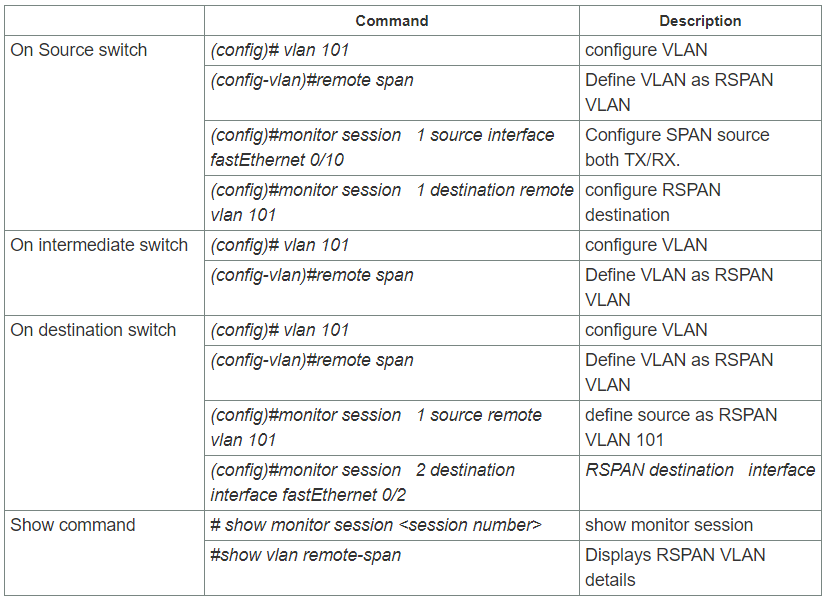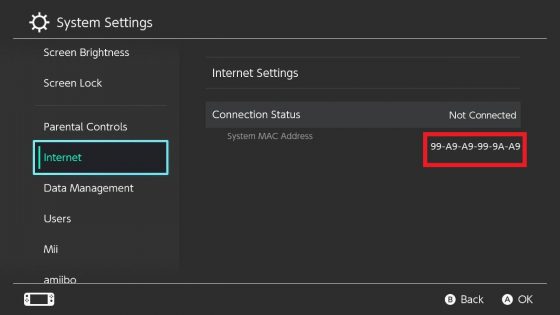

If you introduce a dedicated network tap, that’s another device you need to maintain and support. This ease of configuration and lack of up-front cost makes port mirroring an attractive proposition for organizations taking their first steps toward network observability.Īs an additional bonus, port mirroring is effectively invisible on your network.
#Mac address learning is not supported in rspan install#
Instead of needing to get into a cage and physically install or remove hardware, you’ll just need to modify your switch configuration. This makes port mirroring particularly valuable when your network configuration is constrained by physical space or when you might only need to monitor a VLAN for a short period of time. Compared to something like a network tap, port mirroring is easy and cheap to configure. Let’s start with the most obvious benefit of port mirroring: the functionality is available on your switch. Let's start with the most obvious benefit of port mirroring: the functionality is available on your switch. Those limits remove a lot of choices if ERSPAN is a feature your team needs. Unfortunately, ERSPAN is a Cisco-proprietary feature. This provides a real benefit for organizations with multiple geographically distributed network environments. When you enable ERSPAN, you gain the ability to route mirrored traffic across multiple physical networks. While RSPAN only supports Layer 2 routing, ERSPAN supports Layer 3. If you read the previous paragraph, you can probably guess why ERSPAN exists. It doesn’t support routing traffic through Layer 3. The important thing to know about RSPAN is that all the switches involved need to be on the same physical network. Much like a traditional SPAN configuration, the switch copies all traffic. Now all traffic that passes along switches within that tunnel will be copied to the RSPAN VLAN. When you configure your switch, you dedicate a VLAN (one or more ports) as an RSPAN VLAN. Traffic going from one switch to another moves along a dedicated tunnel. RSPAN takes our SPAN configuration from earlier and works across a dedicated VLAN tunnel.

There are two SPAN variants that handle distributed environments effectively: RSPAN and ERSPAN. If your network topology spans multiple switches, SPAN has you covered. Fortunately, specific SPAN implementations don’t mean that you’re confined to a single physical switch. If you configure SPAN on the wrong switch within your topography, you’re going to wind up missing packets that you want to see. That just makes sense, right? When you’re configuring SPAN, it’s also essential to understand how network traffic passes through your network. For starters, they can’t tell you about any traffic that doesn’t route through the switch you’re configuring. Types of SPAN ConfigurationsĪs you dig into SPAN configurations, it’s important to understand what SPAN setups can and can’t do.

For the purposes of our discussion, we can use these terms interchangeably, but you should keep in mind that every network vendor provides some sort of port mirroring. SPAN ( Switched Port Analyzer) is a Cisco-specific way of handling port mirroring. Usually, this will be some kind of dedicated system set up to monitor the traffic on that switch. Whenever the switch processes a packet, it makes a copy and sends it to whatever is connected to the aforementioned port. Then you configure the switch to “mirror” all traffic that passes through to that reserved port. When you configure a switch, you reserve one port. The concept behind port mirroring is quite simple. We’ll dive into what it is, how it works, what it’s good at, and the drawbacks as well as best practices in using port mirroring. In this post, we’ll talk about one of the most popular means of network observation: port mirroring. Regularly inspecting network traffic can even help you identify network bottlenecks and improve the day-to-day experience for end-users on your network. Network observability gives you a tool to detect malicious intruders in your environment. If and when you experience a network outage, high-quality observability means you’ll diagnose the issue more quickly. There are a number of good reasons to invest in better network observability. No matter your line of business, and no matter your number of users, you need to know what’s happening on your network. Network observability is a core part of systems administration.


 0 kommentar(er)
0 kommentar(er)
